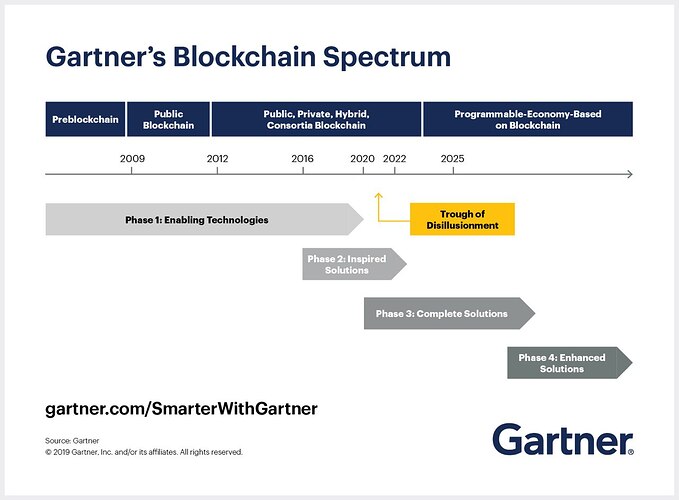In 2018, we launched our ProximaX Sirius private net platform within 6 months. It was easy because there was no consensus mechanism that calls for rewards. We planned the design of the reward system for the consensus mechanism in late 2018 and this continued in 2019. The coding of the consensus mechanism, which is an improved version of NXT’s Proof of Stake, began in the first quarter of this year.
2019 has been yet another momentous year for us. First, we had to deal with a moving target of the Catapult code development as it evolved itself. Next, we had to finish the consensus mechanism, the reward strategy, and finally, deal with the swap process of porting over the entire XPX from NEM’s NIS1 chain.
At the same time, we needed to develop the market space. Our emphasis has always been on enterprise and government while we concurrently grow the public mainnet which requires more design input.
We finally launched our mainnet on 25th. September 2019. I should say, our developers have been superb in getting this done within 6 months upon firming up the consensus mechanism design. We are the first to launch a public network based on the Catapult technology, even ahead of Catapult’s public chain release. Our secret sauce has been the strategy we came out with to launch the mainnet ahead of Catapult itself. We have also developed a mechanism for automatic future upgrades. Upgrades will only occur once we have reviewed and decided to merge code that is relevant for our purpose. We have added in many more subtle yet powerful features for the blockchain, including modifying the plugin code to cater for more functionalities. We have tweaked the performance of the technology to be more resilient and resolved some of the bug issues present in the original solution.
This year, we also started designing the Supercontract, a different approach to on-chain smart contracts. We have named it Supercontract because we believe that this is a far more superior approach to what is currently available in the market. Any failure of the Supercontract does not affect the entire blockchain and it is much more efficient and flexible. It has many features of the traditional smart contract but with the added advantage of being massively scalable without burdening the performance of the blockchain. Additionally, one does not need to learn a new language to be able to program a Supercontract. Any of the common programming languages such as Golang, Java, or C++ can be used to program a Supercontract. Another great feature of our Supercontract is that it can optionally be started or stopped based on consensus and is completely decentralized in approach.
The design philosophy of the ProximaX Sirius platform is about parallel and decentralized processing, thereby giving enormous breadth and depth in performance and scalability.
As we usher in 2020, we should complete most of our SDKs, APIs and other components such as public storage, streaming and Supercontract by the end of Q1, if not by early Q2. For the rest of the year, we should see ourselves improving and tweaking the network. Furthermore, we shall look at chain interoperability, especially with the Cosmos ecosystem.
Based on Gartner’s Blockchain Spectrum, I would like to think that ProximaX is one project that is two years ahead of its peers and one of the most powerful solutions in the market space today. We are into the third phase of that spectrum and treading into phase four for enhanced solutions.
As such, 2020 is crucial for our project as we need to stamp our mark in both the public net and the enterprise space.
We will go back into our war room to examine how we can increase the utility of our public network. This is an elusive element that has been affecting all public projects. Given that we are two years ahead of any competition, we hope to make use of 2020 to develop our hold on the market with our applications.
Throughout 2019, we have been aggressively signing up partnerships with industry system integrators, as well as going into partnerships with some of their projects. This is in line with our out-to-market plan, which includes organic growth with specific targets. We hope to continue signing up more system integrators and engage with them in 2020.
We have developed a few core products along the way and something that is worth mentioning is our eDLX, a distributed ledger for exchanges. In short, it is a code translation of what I have written three years ago. You can find the second edition of the paper here.
Next year, we shall be looking at promoting our Supercontract solution and Self-Sovereign ID (SSI), also known as Digital ID. We are nearing completion for this solution which can be used for signing documents and as a universal ID for signing into applications and websites. Our value proposition compared to other SSI solutions is that our solution allows credentials to be stored as certificates in an all-in-one application, a demonstration of an “enhanced” solution as described by Gartner’s phase four of the blockchain spectrum. The implication of such a solution gives rise to many changes that can happen in the identity industry. It also allows organizations with any sort of certification to onboard seamlessly without the requirement of much technical know-how.
On the value of XPX
In 2018, I stated, – “ In moving forward, I believe those projects that will survive this ‘crypto holocaust’ are projects that have real utility. Almost all projects are currently speculative in nature and have no token economics and ecosystem to drive the demand of a crypto coin. Some of the top 20 coins are not even functioning when it comes to technology. Many of these existing projects and new projects will falter and struggle to survive. Less than 5% of all ICOs from the past will survive and most projects that fail will have created a lot of disappointments among investors. Moving into 2019 and beyond, I foresee this continuing to happen. ” – I continue to stand by what I said. In fact the crypto winter (which points to the value of the coin) is under siege from a “holocaust” on the projects themselves.
Despite much criticism from crypto speculators on the handling of our marketing, I remain firm and sure-footed that effort of this kind is purely just for speculation of the crypto coin and will not contribute to the project’s survivability and its long-term objectives. We do not need to go far to see this as even more established projects are having the same proportionally bad hit to the value of their crypto coins. I can also understand why these speculators want us to take the conventional approach because they were aiming for a hit and run. However, we are neither a ponzi nor a scam, and it is against my principles to do so. Hence their frustration.
Essentially, what I have always been emphasizing from the start is to take a different approach, albeit one that is longer and more arduous.
With that, I would like to wish you all a season’s greetings and we hope to move forward next year with more zeal and impact.
Onwards and upwards!


